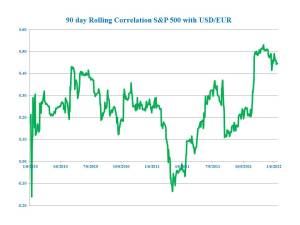Charles Evans, Federal Reserve Bank of Chicago President, was on CNBC yesterday and nicely illustrated why bond yields could stay low for a considerable time. At times sounding as if he was running in a Democratic primary campaign, Evans commented repeatedly on the pain out there in the economy and the chronic unemployment. Interestingly he maintains that the “natural” rate of unemployment remains at 6% even while the numbers of long-term unemployed remains high. The Pew Research Center recently reported that nearly 32% of those out of work haven’t worked for a year – over time leading to an atrophying of skills, reduced employability and ultimately less excess capacity in the labor force as the jobs market moves on. It is no doubt a terrible human tragedy – if only Washington could stumble on the right policies to fix it. But the familiar partisan gridlock remains.
Therefore, since low interest rates are the time-honored solution to economic distress, we face more of the same. It is a recurring irony of recessions that while excessive exuberance and debt generally precede if not cause a slump, much pain is also borne by those whose affairs were managed altogether more prudently. So it is that bond investors today are paying for the sins of their more profligate neighbors through miniscule interest rates that erode the purchasing power of their savings. The over-indebted are helped with a transfer of real wealth from the frugal. Managing your own affairs carefully carries less reward than it might.
A consequence is that dividend yields on a number of blue chip stocks are higher than the yields on their own bonds. This used to be far more common in the early 20th century when bond coupons were regarded much more favorably than uncertain dividends, and you can’t rule out that this state of affairs could persist for many months. It maybe even turn out that this yield advantage of stocks is appropriate for the risk, if we endure a period of protracted slow growth or recession that sees no dividend growth. High dividend yields can indicate corporate stress. Transocean’s stock (RIG) currently yields 6.4%, but the market recognizes some risk this will be cut, either through continued poor execution by management or following a larger than expected settlement with BP on last year’s Macondo spill. On the other hand, Johnson & Johnson (JNJ) stock yields 3.5%, comfortably above its twelve year bond yield of 2.6%. JNJ is not a stressed company and has raised its dividend annually for 49 years. They’re likely to earn close to $5 per share this year and consensus expectations are for 5% EPS growth in 2012. There are numerous other examples in this article for instance. Pepsi (PEP) and Kimberly-Clark (KMB) probably belong in the same category – companies whose stock is highly likely to outperform its own debt.
Falling and low bond yields have so far not dulled retail investors’ appetite. Strong returns on fixed income in recent years, for those who buy securities because “the chart looks good” reduce their return potential as assuredly as night follows day. The most you can earn on JNJ 6.75% corporate bonds maturing 11/15/2023 and yielding 2.6% is, well, 2.6%. That doesn’t even cover inflation, never mind taxes for the eager, momentum-driven buyer. If that return beats stocks over the next ten years it’s unlikely that most types of corporate risk (credit or equity) will have been comfortable places to be. Is it possible the buyers are actually expecting still lower yields and therefore some capital appreciation? Ben Bernanke has surely demonstrated that yields can always go lower. But if you like JNJ bonds at 2.6%, surely treasury bills for a couple of years at 0% with the retained option to invest on better terms later on must be a viable alternative? With a modified duration of just under 9, if the yield rose to 2.9% the capital loss would eliminate the coupon income. A portfolio of reliably growing, dividend paying stocks either in combination with a beta-neutral hedge or cash is far more attractive than high-grade bonds.
Disclosure: Author is Long RIG, JNJ, KMB, PEP
